PENNY MARSHALL AND THE BEAUTY OF BIG
 Wednesday, December 19, 2018 at 10:03AM
Wednesday, December 19, 2018 at 10:03AM Post-2000, the typical Hollywood slate – comic book pics, YA franchise gambles, teen vampire romances, PG horror – has not suited the storytelling skills of Penny Marshall. The director, who passed away overnight aged 75, found occasional gigs on the small screen; her last directing credit was a 2011 episode of The United States of Tara. But in the mid 1980s, when studios developed a broad roster of projects with both commercial and critical ambitions, Penny Marshall became an overnight sensation when her second feature delivered on both. That film, in every sense of the word, was Big.
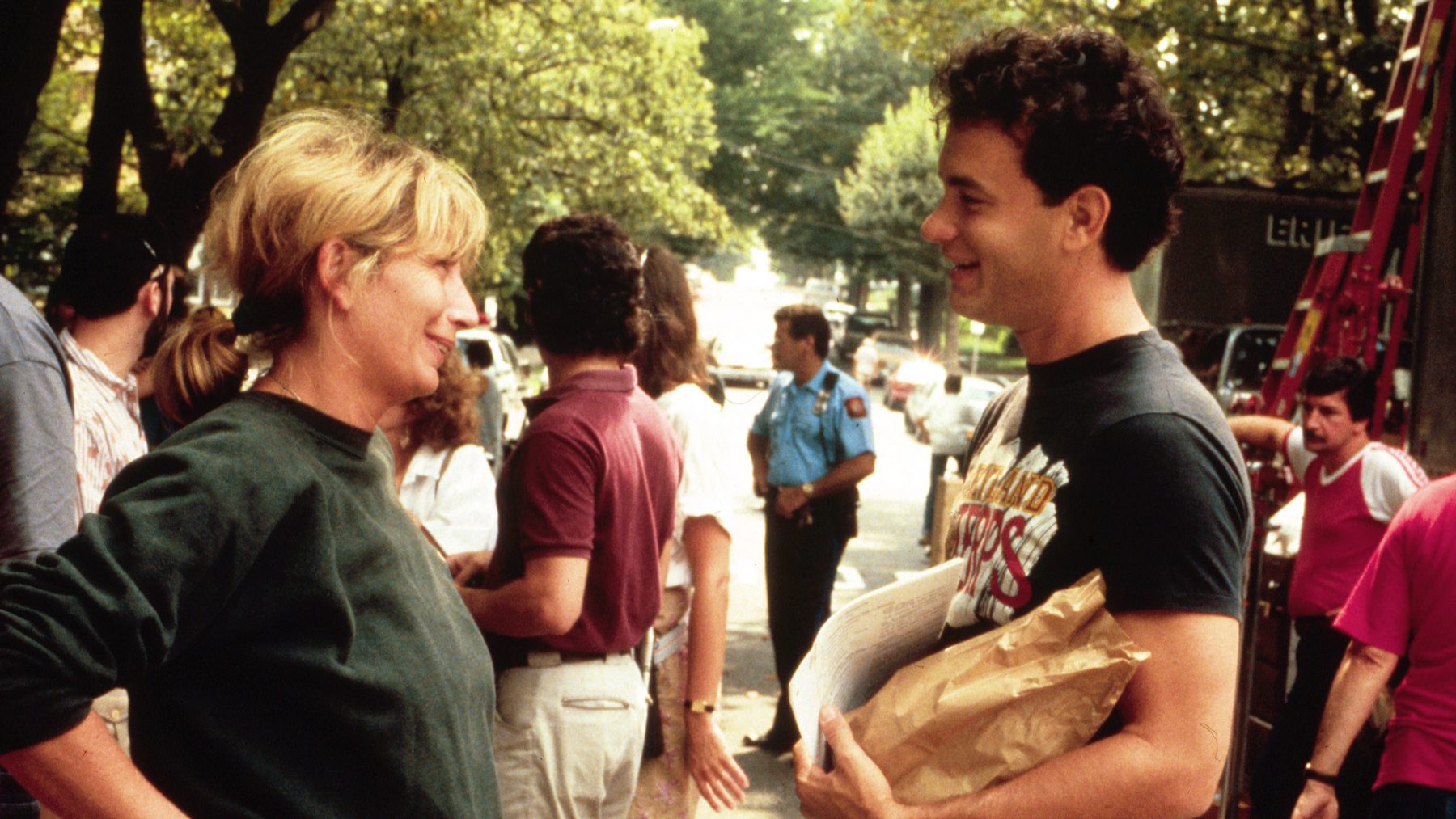
Penny Marshall had directed a few episodes of her iconic TV series Laverne & Shirley (1976-1983) and ceded control of the comedy Peggy Sue Got Married (1986) to Francis Ford Coppola when 20th Century Fox recruited her to rescue the Whoopi Goldberg vehicle Jumpin’ Jack Flash in late 1985. Director Howard Zieff (The Main Event, 1979; Private Benjamin, 1980) had been removed and Marshall would be stepping into a shoot behind schedule and leaking money. Her sitcom training and natural comic timing ensured Jumpin’ Jack Flash sped to the finish line and became a sleeper hit for the studio.
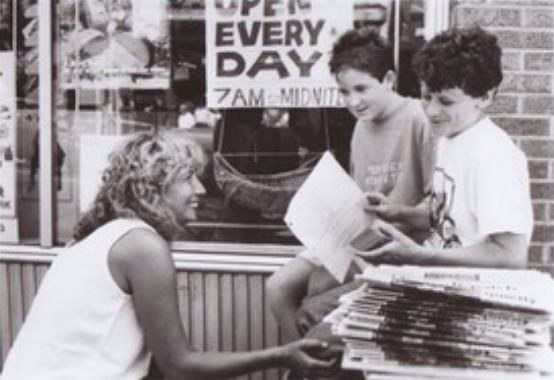 Marshall was rewarded with her choice of projects and zeroed in on a fantasy/comedy script about a young boy who wishes himself into adulthood. Big had been written by Anne Spielberg as a project for her brother Steven to develop with Harrison Ford attached, but their workloads meant the Fox property languished. Oscar-winning industry heavyweight James L. Brooks (Terms of Endearment, 1983), a staple at the studio with film (Broadcast News, 1987) and television (The Tracey Ullman Show; The Simpsons) works in development, brought the screenplay to Marshall. She warmed to it immediately, and began a casting search for the role of 12 year-old Josh Baskin (pictured, from left; Marshall with actors Jared Rushton and David Moscow)
Marshall was rewarded with her choice of projects and zeroed in on a fantasy/comedy script about a young boy who wishes himself into adulthood. Big had been written by Anne Spielberg as a project for her brother Steven to develop with Harrison Ford attached, but their workloads meant the Fox property languished. Oscar-winning industry heavyweight James L. Brooks (Terms of Endearment, 1983), a staple at the studio with film (Broadcast News, 1987) and television (The Tracey Ullman Show; The Simpsons) works in development, brought the screenplay to Marshall. She warmed to it immediately, and began a casting search for the role of 12 year-old Josh Baskin (pictured, from left; Marshall with actors Jared Rushton and David Moscow)
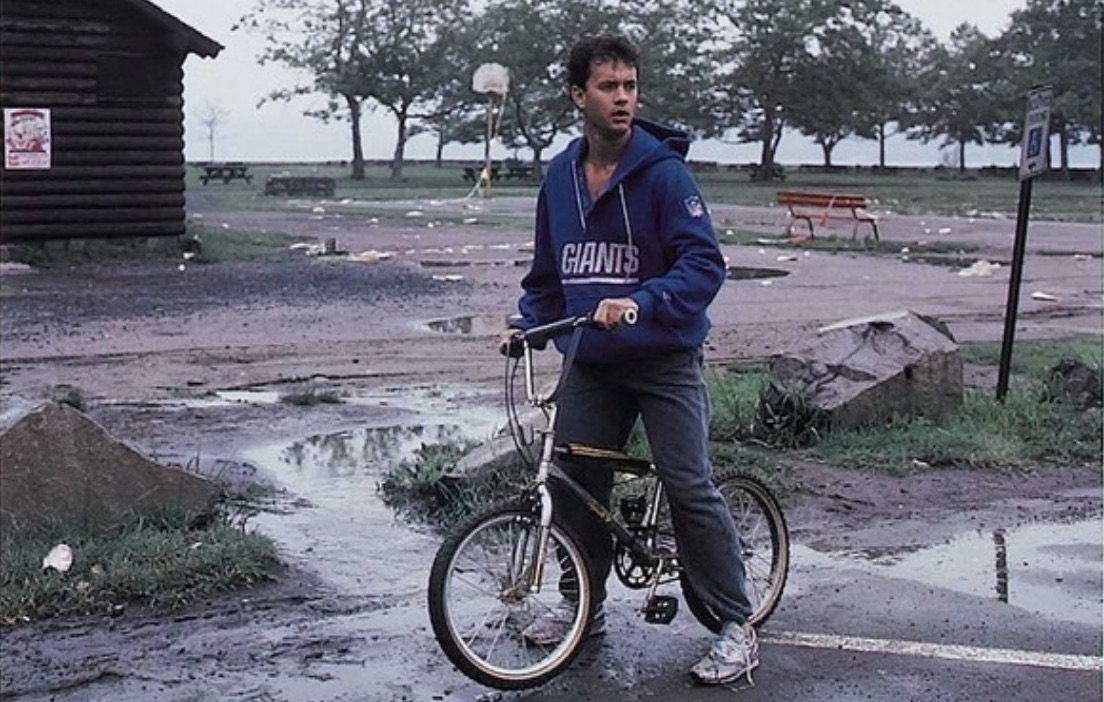 Marshall’s attachment to the resurgent production meant the Fox brass started to weigh in on key pre-production decision-making. Marshall toyed with a rewrite that made the lead character female, hoping to cast Debra Winger (with whom she had almost shot her aborted Peggy Sue… project). When this proved unworkable, the casting call went out Hollywood’s biggest stars, including Bill Murray, Jeff Bridges, Robin Williams, Michael Keaton, Judge Reinhold, Albert Brooks, Dennis Quaid, Sean Penn, Gary Busey and Steve Guttenberg. Marshall zeroed in on two favourites, both of which were nixed by the studio – John Travolta, who was in the worst box office slump of his career, and Robert De Niro, America’s greatest living actor (and dear friend of Marshall) though untested as a comedy lead (pictured, left; Tom Hanks as Josh Baskin in Big)
Marshall’s attachment to the resurgent production meant the Fox brass started to weigh in on key pre-production decision-making. Marshall toyed with a rewrite that made the lead character female, hoping to cast Debra Winger (with whom she had almost shot her aborted Peggy Sue… project). When this proved unworkable, the casting call went out Hollywood’s biggest stars, including Bill Murray, Jeff Bridges, Robin Williams, Michael Keaton, Judge Reinhold, Albert Brooks, Dennis Quaid, Sean Penn, Gary Busey and Steve Guttenberg. Marshall zeroed in on two favourites, both of which were nixed by the studio – John Travolta, who was in the worst box office slump of his career, and Robert De Niro, America’s greatest living actor (and dear friend of Marshall) though untested as a comedy lead (pictured, left; Tom Hanks as Josh Baskin in Big)
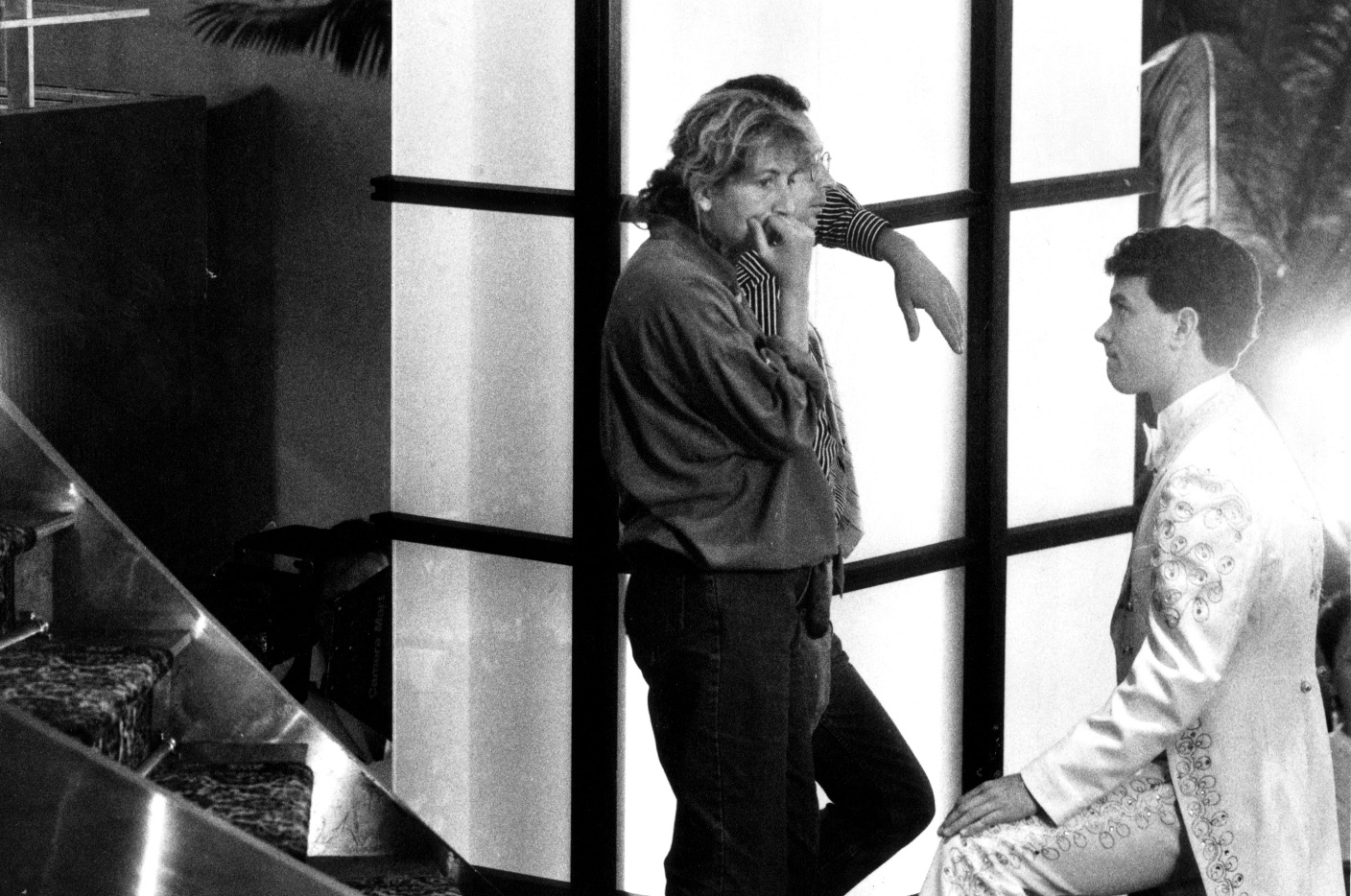 Instead, the studio and their director decided to hold out for Tom Hanks, who had hit big with Bachelor Party and Splash (both 1984), though had lost momentum after a string of underperformers (The Man With One Red Shoe, 1985; Volunteers, 1985; The Money Pit, 1986; Nothing in Common, 1986). With young David Moscow cast as boy Josh (outfitted with contact lenses to match Hanks’ eye colour), support players Elizabeth Perkins, John Heard, Mercedes Ruehl and Robert Loggia adding dramatic heft onscreen and top-tier talent such as DOP Barry Sonnenfeld, composer Howard Shore and writer Gary Ross (who did a WGA-recognised polish on the script) in the mix, the US$18million film began shooting at locations in New York City and New Jersey in mid-1987, eyeing the prime summer release date of June 3, 1988 (pictured, from left; Marshall, DOP Barry Sonnenfeld and Hanks on-set).
Instead, the studio and their director decided to hold out for Tom Hanks, who had hit big with Bachelor Party and Splash (both 1984), though had lost momentum after a string of underperformers (The Man With One Red Shoe, 1985; Volunteers, 1985; The Money Pit, 1986; Nothing in Common, 1986). With young David Moscow cast as boy Josh (outfitted with contact lenses to match Hanks’ eye colour), support players Elizabeth Perkins, John Heard, Mercedes Ruehl and Robert Loggia adding dramatic heft onscreen and top-tier talent such as DOP Barry Sonnenfeld, composer Howard Shore and writer Gary Ross (who did a WGA-recognised polish on the script) in the mix, the US$18million film began shooting at locations in New York City and New Jersey in mid-1987, eyeing the prime summer release date of June 3, 1988 (pictured, from left; Marshall, DOP Barry Sonnenfeld and Hanks on-set).
Marshall has been forthright about her anxiety during the shoot. Dailies were certainly supporting the decision to cast Hanks; the now iconic scene in which he and Loggia dance on the giant piano keys had Fox executives thrilled. The comedic chemistry between Hanks and Jared Rushton, cast as Josh’s boyhood friend Billy and the only character in on Josh’s secret, was plainly evident. But the director spent much of the shoot diplomatically fending of studio interference, most notably their insistence that love-interest Susan, played by Elizabeth Perkins, make the journey back to childhood with Josh in the film’s final scenes.
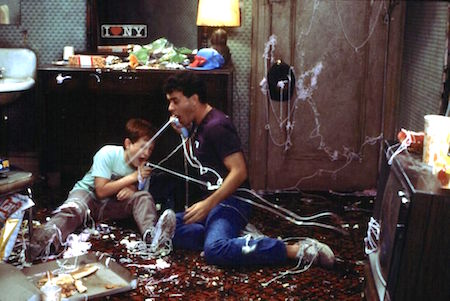 Several of the film’s biggest laughs were workshopped/improvised, such as Billy and adult Josh’s classic silly-string fight or Hanks chewing on a baby-corn cob; the ‘Shimmy Shimmy Coco-Pop’ song was entirely Hanks’ idea, inspired by a tune his own kids came home from summer camp humming. Marshall had no idea if they would cut into the finished film at all, leaving her to ponder its potential as a ‘laughless comedy’.
Several of the film’s biggest laughs were workshopped/improvised, such as Billy and adult Josh’s classic silly-string fight or Hanks chewing on a baby-corn cob; the ‘Shimmy Shimmy Coco-Pop’ song was entirely Hanks’ idea, inspired by a tune his own kids came home from summer camp humming. Marshall had no idea if they would cut into the finished film at all, leaving her to ponder its potential as a ‘laughless comedy’.
To further complicate principal photography, four other ‘body-swap’ storylines hit theatres while Big was in production – in order of release, Like Father Like Son (1987), with Dudley Moore and Kirk Cameron; the Italian comedy, Da Grande (1987); Fred Savage and Judge Reinhold in Vice Versa! (1988);and, 18 Again (1988) with Charlie Schlatter and George Burns. Each was met with middling critical and commercial interest, ensuring further concerns for Marshall and her producers.
 In hindsight, any concern was unwarranted. Big became one of 1988’s biggest hits, earning US$114million domestically (in 2018 dollars, a whopping US$243million) and placing it as the years’ #4 box-office earner, behind Rain Man, Who Framed Roger Rabbit? and Coming to America. It was record-setting triumph for Penny Marshall; her comedy was the first film directed by a woman to break the US$100million barrier and would earn Academy Award nominations for Hanks in the Best Actor category and for its Original Screenplay. In 2000, the American Film Institute included Big on its ‘100 Years…100 Laughs’ list, honouring the best American comedies of all time (pictured, above; from, left, Marshall, Rita Wilson and Tom Hanks).
In hindsight, any concern was unwarranted. Big became one of 1988’s biggest hits, earning US$114million domestically (in 2018 dollars, a whopping US$243million) and placing it as the years’ #4 box-office earner, behind Rain Man, Who Framed Roger Rabbit? and Coming to America. It was record-setting triumph for Penny Marshall; her comedy was the first film directed by a woman to break the US$100million barrier and would earn Academy Award nominations for Hanks in the Best Actor category and for its Original Screenplay. In 2000, the American Film Institute included Big on its ‘100 Years…100 Laughs’ list, honouring the best American comedies of all time (pictured, above; from, left, Marshall, Rita Wilson and Tom Hanks).
In an interview with The Washington Post following the film’s release, Penny Marshall was typically acerbic about her beloved comedy classic. "I hated it for a long time," she says. "You go through different phases, so I'm told. 'Oh, God. What did I do here? What is this? This is crap.' And then your saving grace is you see it with an audience. They give you feedback and they give you the energy to go on."
 80s Cinema,
80s Cinema,  Comedy,
Comedy,  Obituary,
Obituary,  Tom Hanks
Tom Hanks 













